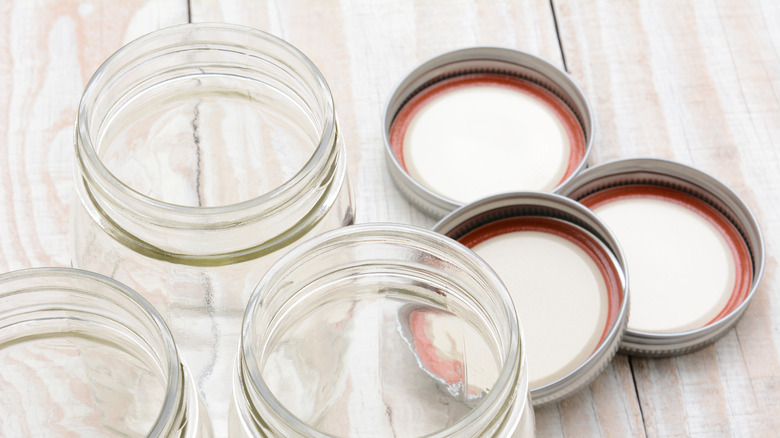Why You Should Never Reuse Canning Jar Lids
What's old has become new again when it comes to practices like canning. Between pandemic-fuelled hobbies and social media trends, Morning AgClips explains that the popularity of home canning is steadily increasing. With this newfound interest in preservation, there are a few things to consider, like which foods work best or what equipment is required. That said, there's one thing you should never do when canning at home, and that's reuse jar lids.
Just like freezing, smoking, drying, or fermenting, canning ensures that food stays safe and tasty for an extended period of time. Introduced as a way to extend the shelf life of foods for military use in the late 18th century, the USDA reports that the practice led to the introduction of canneries and eventually inspired a wave of home canning during WWI and WWII.
A great way to bottle up the flavors of the summer season, almost any food can be canned from jams, tomatoes, relishes, salsas, and — of course — pickles. Essentially, Ball explains that heating the jars in a water bath kills spoilage-causing bacteria while creating a vacuum seal to keep microorganisms out as the jars cool. However, this can only be true when the proper equipment is used.
A deadly risk of seal failure
Reducing, reusing, and recycling is a great concept, but it's probably best to avoid reusing those jar lids when it comes to home canning. Unless you're making a quick refrigerator pickle, Taste of Home explains that canning lids are intended for single use as they won't provide the same seal the second time.
According to North Dakota State University, the gasket compound on a new lid allows air to escape the jar while forming an airtight seal as the jars cool after a water bath, unlike a previously used lid, which poses a higher risk of failing to seal properly. But why is this a problem?
Improper sealing can allow spores of clostridium botulinum bacteria to germinate, leading to a deadly outcome should you ingest the contents of a contaminated jar, notes the CDC. What's more, the bacteria isn't something that you can see, smell, or taste, making it all the more dangerous. Rather than leave it up to fate, ditch last year's lids for new ones and always make sure to follow proper canning protocol.

